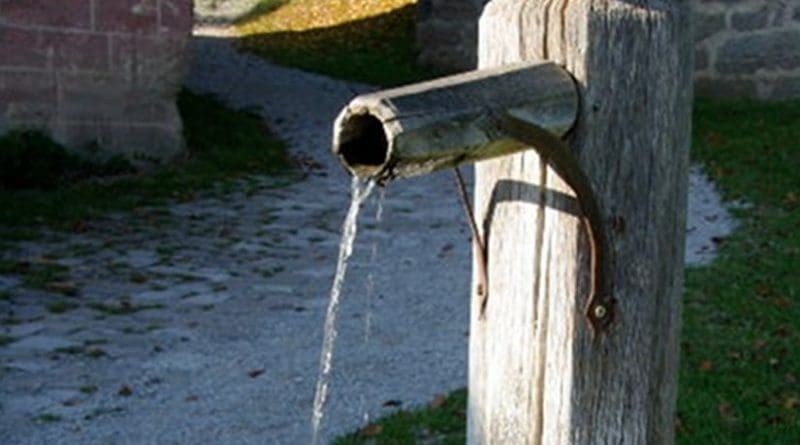Making Affordable Water For The Poor – OpEd
Meeting the basic water needs of the world’s poorest people can only happen if investments in infrastructure are redirected to affordable, decentralized an environmentally sustainable technologies.
Yet this approach is being largely ignored by governments and financial institutions as well as large dam lobbyists.
Affordable water technologies can that raise the yields of small farmers are essential for increasing food production. Small farmers, most of who live on rain-fed lands, make up the great majority of the world’s extremely poor people. Raising their yields require water, water management and rainwater harvesting technologies.
The widespread implementation of small-scale infrastructure for delivering water services is a prerequisite for achieving the Millenium Development Goals.
This calls for pump technologies, drip irrigation and small water impounding systems.
Underexploited Rainwater
The importance of rainwater for agriculture has traditionally overlooked by hydraulic engineers and water managers who has seen their job as mainly capturing and redirecting water from rivers, lakes and acquifers.
Yet, as Malin Falkenmark of the Stockholm International Water Institute has pointed out, the visible “blue water” or rain is hardly captured and used.What is largely depended on is “green water”, the invisible water cycling through soils and vegetation in the form of vapor in the atmosphere.
Falkenmark argues blue water is hardly captured to be used in expanding irrigation for agriculture. Rainwater harvesting involves trapping rainwater behind small dams built across seasonally-flooded gullies and depressions, or catching it on surfaces such as roofs and storing it in tanks or drums.
In many areas, the most important purpose of rainwater harvesting structures is not only to make water available in ponds or storage tanks but also to allow water to percolate to the ground.
Rainwater harvesting structures can be built and managed by farmers and households themselves at a fraction cost.
Simple Treadle Pump Irrigation System Brings Life to Barren Land
The foot-driven treadle pump is an incredibly simple and effective irrigation system. The treadle pump can greatly increase the income that farmers generate from their land, both by extending the traditional growing season and by expanding the types of crops that can be cultivated.
Able to be operated by one or two adults, the treadle pump uses pedal power to suck water up from wells up to 7.5m deep at a rate of up to 18m3 per hour – that’s six times more water than from a traditional hand pump. What’s more, because leg muscles tire less than arm muscles, it can also be used by the farmers for longer. And because most of the parts are manufactured locally, it also brings much needed income to the local economy.
Nepali Water Experience with Treadle Pump
Phool Kumari lives in the Banke district of Nepal, with her husband, two children and a sister in law. Phool and her husband were barely able to provide two meals a day for their family. Earning to provide enough nutritious food, proper clothing and adequate shelter seemed more like a distant reality. But today things have changed after being introduced to the treadle pump by an NGO project.
“The project provided us training on nursery management, seasonal and off seasonal commercial vegetable production and group management. We also received seeds, fertilisers, water cane and other supporting materials. They even installed a treadle pump in my farm” she explains.
“With vegetable farming we earn around two US dollars per season. With this income I am paying tuition fee for my children and sister in law. We are able to buy enough food and clothes. We even bought an ox,” she claims.
The project has installed a treadle pump in Phool’s farm; with the regular irrigation facility it has boosted the vegetable production. The treadle pump is an appropriate option for irrigation as it pumps more water than a hand pump. The project also provided treadle pump operation and maintenance training to the farmers.
“The leased land has given us a lot. Before we used to sell wooden logs and earned very less. But now we have made so much profit that we have leased another piece of land where we have planted paddy. The treadle pump is exactly what we needed to boost our production, she affirms.”
Phool is now building a new house for her family: “I am relieved because of the sustainable income. We cannot wait to plant more crops to increase our income.”

